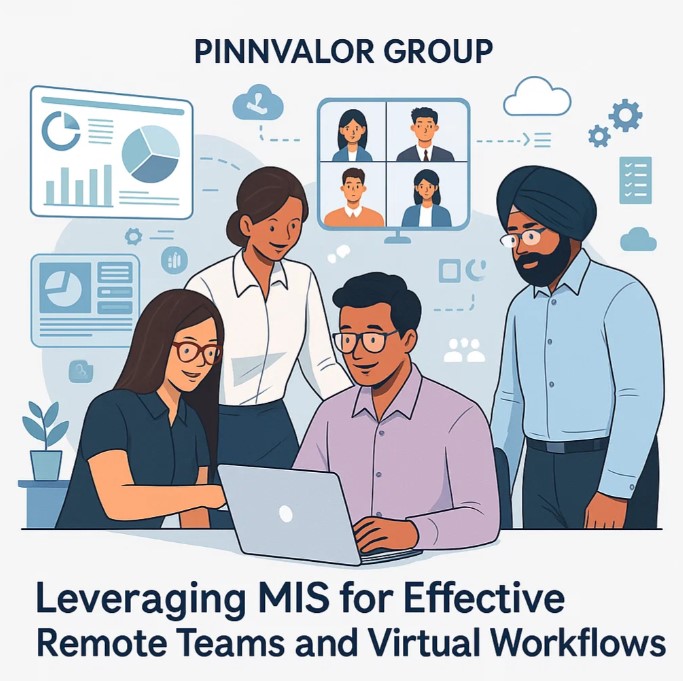
Leveraging MIS for Effective Remote Teams and Virtual Workflows
The modern workplace is undergoing a significant transformation. With remote work becoming the norm rather than the exception, organizations face new challenges in managing teams, coordinating tasks, and maintaining productivity across virtual workflows. One key solution that has emerged as a game-changer is Management Information Systems (MIS). By leveraging MIS, companies can streamline operations, enhance communication, and make data-driven decisions that support remote teams effectively.
Can your remote team achieve peak productivity without the power of MIS?Wondering how to treat grants in your financial statements under IAS 20?
Management Information Systems are no longer optional— they’re the backbone of successful virtual collaboration.
Understanding MIS in the Remote Work Context
Management Information Systems (MIS) are structured frameworks that collect, process, and analyze data to help organizations make informed decisions. Traditionally, MIS has been used for inventory management, finance, and operational reporting. However, in the era of remote work, its role has expanded to support virtual collaboration, monitor team performance, and facilitate real-time communication across geographies.
MIS acts as the central nervous system for remote teams. It ensures that employees, managers, and stakeholders have access to accurate, up-to-date information, no matter where they are located. This accessibility is crucial for virtual workflows, where delays or miscommunication can lead to project setbacks.
Key Benefits of MIS for Remote Teams
- Enhanced Communication and Collaboration: MIS platforms often integrate messaging, project management, and document-sharing tools. This centralization reduces the friction caused by scattered emails or disconnected communication channels. Teams can collaborate on tasks in real time, track progress, and address issues promptly.
- Data-Driven Decision Making: Remote managers often struggle to monitor performance without micromanaging. MIS provides dashboards and analytical tools that present clear insights into productivity, resource allocation, and project milestones. Decisions can then be based on reliable data rather than assumptions.
- Efficient Workflow Management: Virtual workflows require careful orchestration. MIS enables task assignment, progress tracking, and deadline monitoring in one unified system. Automation features further streamline repetitive processes, freeing team members to focus on higher-value work.
- Enhanced Security and Compliance: Remote work exposes organizations to data security risks. MIS platforms often include security protocols, access controls, and audit trails, ensuring sensitive information remains protected. This is especially important for teams handling confidential client data or regulatory compliance tasks.
- Scalability and Flexibility: As teams grow or projects become more complex, MIS systems can scale accordingly. Whether adding new employees, integrating additional tools, or expanding workflows, a well-implemented MIS adapts to the organization’s evolving needs.

Implementing MIS in a Remote Work Environment
- Choose the Right MIS Platform: Look for systems that integrate communication, project management, reporting, and analytics. Cloud-based platforms often offer the flexibility and accessibility needed for virtual teams.
- Train Employees Effectively: Even the best MIS tools are only effective if employees know how to use them. Provide training sessions and create user guides to ensure smooth adoption.
- Standardize Processes: Define workflows, reporting structures, and data entry standards to maintain consistency across teams. Standardization minimizes errors and ensures MIS outputs are reliable.
- Monitor and Optimize Regularly: Use the analytics capabilities of MIS to continuously assess team performance and workflow efficiency. Adjust processes as needed to improve productivity and employee satisfaction.
Future of MIS in Remote Work
As remote work continues to evolve, MIS will play an increasingly strategic role. Emerging technologies like AI, machine learning, and predictive analytics will enhance MIS capabilities, allowing organizations to anticipate workflow bottlenecks, optimize resource allocation, and personalize employee experiences in virtual settings.
By integrating MIS into remote teams and virtual workflows, organizations not only maintain operational efficiency but also foster a culture of transparency, accountability, and collaboration—essential elements for success in today’s digital-first workplace.
Conclusion
Remote work is here to stay, and so is the need for smart, efficient, and data-driven management. Leveraging MIS allows organizations to bridge the gap between dispersed teams, streamline virtual workflows, and make informed decisions that drive productivity and growth. In short, MIS isn’t just a tool; it’s the backbone of effective remote collaboration.
